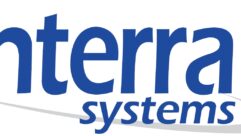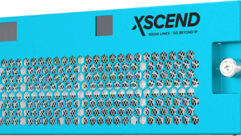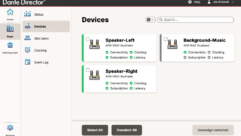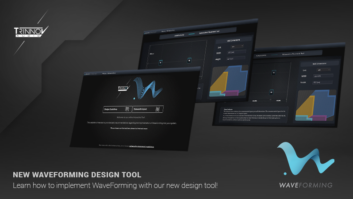The Future Of AV Media Distribution
Apple recently announced its newest iPod, which will play music videos and TV shows. Granted, image resolution is low (320×240 pixels), and it will take 15 to 20 minutes over a broadband connection to download a one-hour program.
APPLE RECENTLY announced its newest iPod, which will play music videos and TV shows. Granted, image resolution is low (320×240 pixels), and it will take 15 to 20 minutes over a broadband connection to download a one-hour program. Apple’s announcement isn’t as significant for the actual product as it is for a growing trend: the distribution of audio and video media to RAM drives. We’re in the midst of a massive changeover from analog to digital media content, and there are numerous contenders for storage and playback of that content currently fighting for their lives.
Tape is probably the most threatened by this transition. While tape recording and playback has been around for decades, it’s falling out of favor in the consumer market because it can’t provide the random access navigation that hard disk drive (HDD) recording can. Consider JVC’s digital VHS format, D-Theater. It was originally touted as a way to watch purchased or rented high-definition movies, with a nominal bit rate around 25 Mb/s. That’s higher than the bit rates allocated for HDTV programs on cable and satellite systems, not to mention terrestrial broadcasts. The first D-Theater players (HM-DH30000U) came to market at a price close to $2,000 a few years back. Over time, they dropped by 50 percent, then by 50 percent again. Next, a new model (HM-DH40000U) appeared with a higher price tag, but as of press time it was available for just $300 as a closeout, replaced by the HMD-H5U for less than $500.
With the widespread availability of recordable DVD for standard-definition video and cable/satellite/terrestrial set-top boxes with internal hard disk drives for HD video, there just wasn’t enough interest in the format — particularly among home theater enthusiasts. D-Theater tape prices are now about the same as DVD box sets, and there’s word that major Hollywood studios won’t release any more titles in the format.
How about disc media? A couple of years back, Sony introduced a new optical disc recording and playback format for video production, known as XDCAM. It uses a proprietary blue-laser, rewriteable system and has a capacity of 23.3 GB per disc, which is suitable for recording and playback of both SD and HD video. XDCAM has met moderate success in its battle with tape-based camcorder formats.
Panasonic has taken a different approach by using SD memory cards in its professional camcorders, eliminating the need for a disc altogether. Those cards are now available in 4 GB sizes, which isn’t nearly as large as the Sony optical disc media. But Panasonic camcorders can accept up to four SD cards at one time, bringing the storage capacity to 16 GB.
There have been many questions about disc and RAM memory formats for video recording and playback. Some have questioned the durability of XDCAM recording media, while others have said the Panasonic cards are too expensive. We know that prices on storage media drop quickly (1 GB flash drives are available for less than $90 now, and 6 GB versions are about $300), so it’s reasonable to assume that Panasonic will be able to hit 32 GB capacity (4 x 8 GB) sometime later next year. And the SD card format isn’t proprietary, unlike Sony’s XDCAM disc media.
Over on the consumer side, we have the impending launches of Toshiba’s HD-DVD and the Blu-ray consortium’s format in 2006. And there’s still life in red lasers, with the introduction of dual-layer 8.5 GB DVD-R/RW media and demonstrations of even higher-density DVDs with storage capacity approaching 40 GB.
What about hard drives? They’re popular for media servers in broadcast and digital signage applications. Hard drives are cheap, too, although they’ll all fail at some point. But if you need a hundred gigabytes of storage capacity at a reasonable price, they’re the only way to go.
In the professional AV world, we use all of these formats on a daily basis. As facilities are upgraded or built from scratch, the question becomes one of future proofing digital media delivery, which is almost impossible to predict. The only thing that seems to be a given is the gradual extinction of tape.
So, what does the future look like? For one thing, prices of HDRs will continue to drop and these gadgets are very useful. I picked up an LG LST-3410A STB/HDR combo earlier this summer for my studio, and it sounds like a Swiss Army knife in its functionality. The 3410 receives analog NTSC, digital ATSC, and unscrambled digital QAM (cable) signals, has 125 GB of disk capacity, outputs video in component, RGB, and DVI formats, and provides an IEEE-1394 interface for recording to/from the hard drive. If you have video from compatible FireWire sources, you can record that to the drive, too.
The Future Of AV Media Distribution
Apple recently announced its newest iPod, which will play music videos and TV shows. Granted, image resolution is low (320×240 pixels), and it will take 15 to 20 minutes over a broadband connection to download a one-hour program.
I own two JVC D-VHS VTRs, and must admit they haven’t gotten much use. The LG unit is primarily used for recording HD video clips for product testing, but I could easily dump its contents off to another hard drive, or burn them to one of the new dual-layer DVD formats. There are plenty of DVD recorders around, although at present they’re only intended for recording standard-definition video. Prices range from $200 up to $1,000 for fully featured combination models, and many models support external recording through that same FireWire interface.
We’re still awaiting the arrival of HD-DVD and Blu-ray — two formats that play back packaged HD media (and will ultimately record it, too). Disc capacities are 15 GB and 30 GB in the HD-DVD system and 25 GB and 50 GB with Blu-ray, and data can be written and streamed at 36 Mb/s. Both formats are expected to debut in the first quarter of 2006, and will be primarily aimed at the home theater market, although there will no doubt be interest in each of them from education, worship, and government markets. The success or failure of either format will depend largely on consumer acceptance.
From this perspective, it would seem that HDRs and flash RAM will become the formats of choice for recording and playback, simply because the data transfer speeds are so fast, and both technologies continue to drop in price rapidly as capacity increases. Flash RAM also provides lots of storage in a very compact size and isn’t as susceptible to environmental stresses as optical disc media.
However, the latter also has its place, and that may ultimately be in archiving files. Flash RAM is much more likely to be re-written over and over, while DVDs and other optical discs are probably best suited as “write-once and store” formats.
The sizes of the media files being recorded on a regular basis will determine which is more appropriate — a 4 GB flash RAM card has about the same capacity as a 4.7 GB DVD (around two hours of SD video), but writes and dumps data much faster. Whichever formats ultimately win out, you can be assured of one thing — each format’s proponents will spend lots of ad dollars to convince you their recording and playback system is the best.
Pete Putman is a contributing editor for Pro AV and president of ROAM Consulting, Doylestown, PA. Especially well known for the product testing/development services he provides manufacturers of projectors, monitors, integrated TVs, and display interfaces, he has also authored hundreds of technical articles, reviews, and columns for industry trade and consumer magazines over the last two decades. You can reach him at [email protected].










